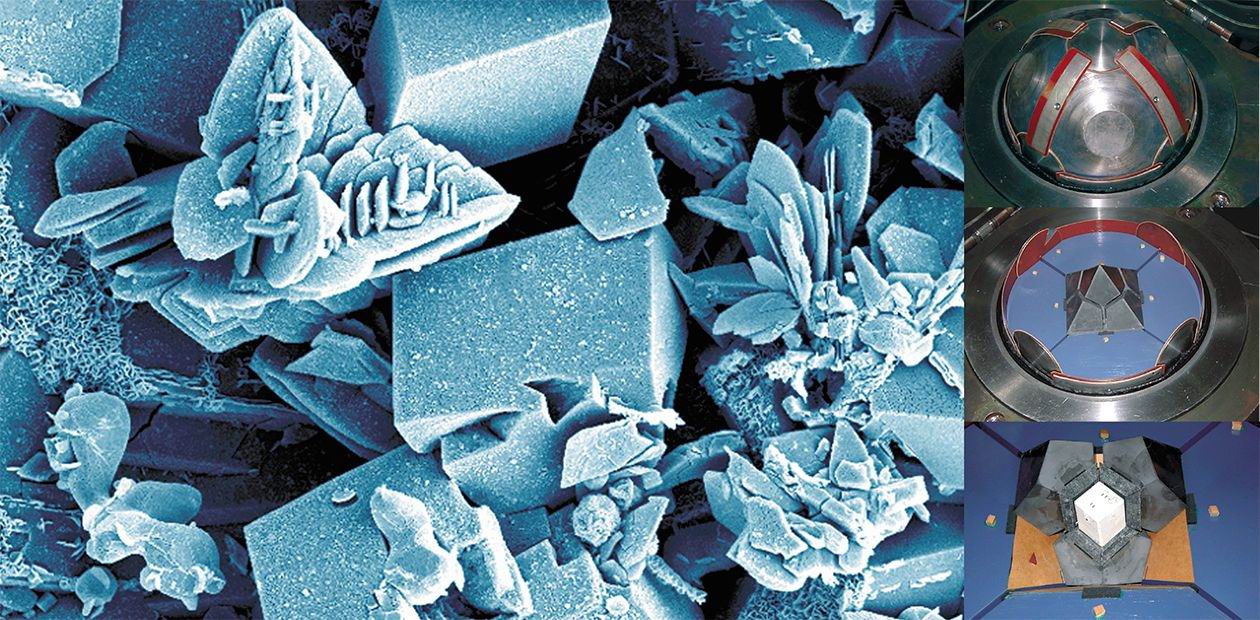Diamond Today and Tomorrow
Everybody knows that diamond is the hardest mineral. This feature makes diamond indispensable for processing various materials. Diamond is also the best precious stone because, being faceted, it becomes a brilliant. Thus, the traditional areas of diamond application are based on only two of its properties: extreme hardness and a unique set of gemological characteristics. Nevertheless, diamond also possesses other properties which are even more surprising…
This mineral is a covalent wideband semiconductor whose thermal conductivity is five times the thermal conductivity of silver and copper. Typical features of diamond are the high mobility of charge carriers and chemical, thermal, and radiative stability. Diamond can be doped by electrically active impurities. Thus, it is a classical object of research in solid-state physics and chemistry, physical chemistry, crystallography, and many other sciences. In the Earth sciences, diamond is primarily considered as an indicator of deep geological processes and a unique container which captured matter out of such depths where humans do not even dream to cast a glance in the near future.
Today we can definitely say that diamond is the object of interdisciplinary research. The most comprehensive approach to solving the problems arising around diamond requires joint efforts of specialists from different fields of knowledge.
The Institute of Geology and Mineralogy of the Siberian Branch of the Russian Academy of Sciences developed a multianvil high-pressure device of the “slit-sphere” type called BARS, methods of stabilization of extreme Р—Т parameters in long-time modes (tens and hundreds of hours), and a number of methods for growing diamond crystals. This means that it is possible not only to reach simultaneously pressures of 60—70 thousand atmospheres and temperatures of 1 500—2 000 °С, but also to maintain these parameters for several days and even control extremely sophisticated processes of crystal growth under these conditions.
A pioneering study of mechanisms of diamond crystallization in alkali mantle fluids at pressures and temperatures equal to those in natural diamond formation has been performed. Models of diamond genesis in deep magmatic and metamorphic processes have been developed and validated by experiments. Indeed, the scientists managed to find and reproduce in laboratory the conditions that were observed during natural crystallization of diamond millions of years ago at depths of more than 150 km.
It was at the Institute of Geology and Mineralogy SB RAS in Novosibirsk that large crystals of synthetic diamond with a mass up to 1.5 carats were obtained for the first time in our country.
Comprehensive investigations of diamond growth, as well as the study of its real structure and properties made it possible to grow single crystals of diamond with a mass up to 6.0 carats, which is important for practical applications.
Certainly, natural diamonds are extremely beautiful. Yet, there are no twins among these crystals, while today’s science and engineering need high-quality diamonds with certain prescribed properties which have to be the same in all crystals. Such diamonds can be grown in the laboratory conditions. Moreover, it is possible to grow crystals with new unusual features, with no analogs existing in nature.
Achievements and prospects of today’s science of diamonds will be described in the next issue of the journal in a paper by Yu. N. Palyanov, doctor of geology and mineralogy (Institute of Geology and Mineralogy SB RAS).









